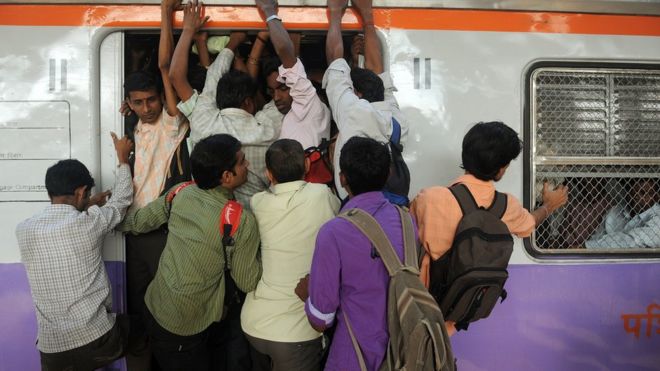India's most unliveable city
Has Mumbai become India's most unliveable city?

A deadly stampede at a busy Mumbai station that killed 23 people last Friday has caused anger, not only because it could have been avoided, but because residents feel that it is yet another example of the city suffering due to officials' apathy, writes the BBC's Ayeshea Perera.
The feeling is overwhelming. The stampede at Mumbai's Elphinstone Road railway station was an accident waiting to happen.
The stairway leading out of the station into a busy office district in central Mumbai was far too narrow to handle the thousands of passengers who used the station every single day. Daily commuters spoke of how it would unnervingly shake every time a train pulled in or out of the station.
Mumbai, with a population of roughly 22 million, is the world's fourth most populated city. And population has been its nemesis. Surrounded by water on three sides, the city has no space to expand. And the result is an enormous pressure on public services.
There had been a number of petitions to civic authorities, asking for Elphinstone bridge to be renovated, but to no avail.
"The foot overbridge and staircases are cramped, and the station was always at risk of a stampede. We often brought this up, but railway authorities ignored our concerns," Subash Gupta, a member of Mumbai's railway passengers' association told BBC Marathi.
In a twist of irony, one newspaper reported that the long overdue funds to renovate the station bridges had been granted on the same day as the deadly accident. Another quoted the former minister of railways Suresh Prabhu as saying he had allocated 120m rupees ($1.8m;£1.3m) towards boosting the nfrastructure in 2015i iand did not know why it had not been used. Public documents accessed by a television channel show that of that sum, a meagre 1,000 rupees had been set aside for the repairs.
And it's not just the railways that are the problem. A few weeks ago, heavy rains caused severe flooding, stranding tens of thousands of residents as roads literally turned into rivers. A few days later, a residential building collapsed, killing more than 30 people. The crumbling infrastructure of India's financial capital seems to be breaking down all at once.
- Mumbai railway station stampede kills 22
- Heavy rains bring Mumbai to a standstill
- Mumbai flooding causes transport chaos
The Mumbai Human Development Report of 2009, noted that a "willingness to put up with inconveniences for a livelihood" appear to be among the unique features of the city's residents.
So inconveniences like cramped and unhygienic housing, diminishing open space and crowded train travel are accepted as part and parcel of daily life.
But now people have just about had enough.
The anger is palpable. Fed up residents are being vocal about how much they feel their city is suffering due to political and official apathy.





Post a Comment